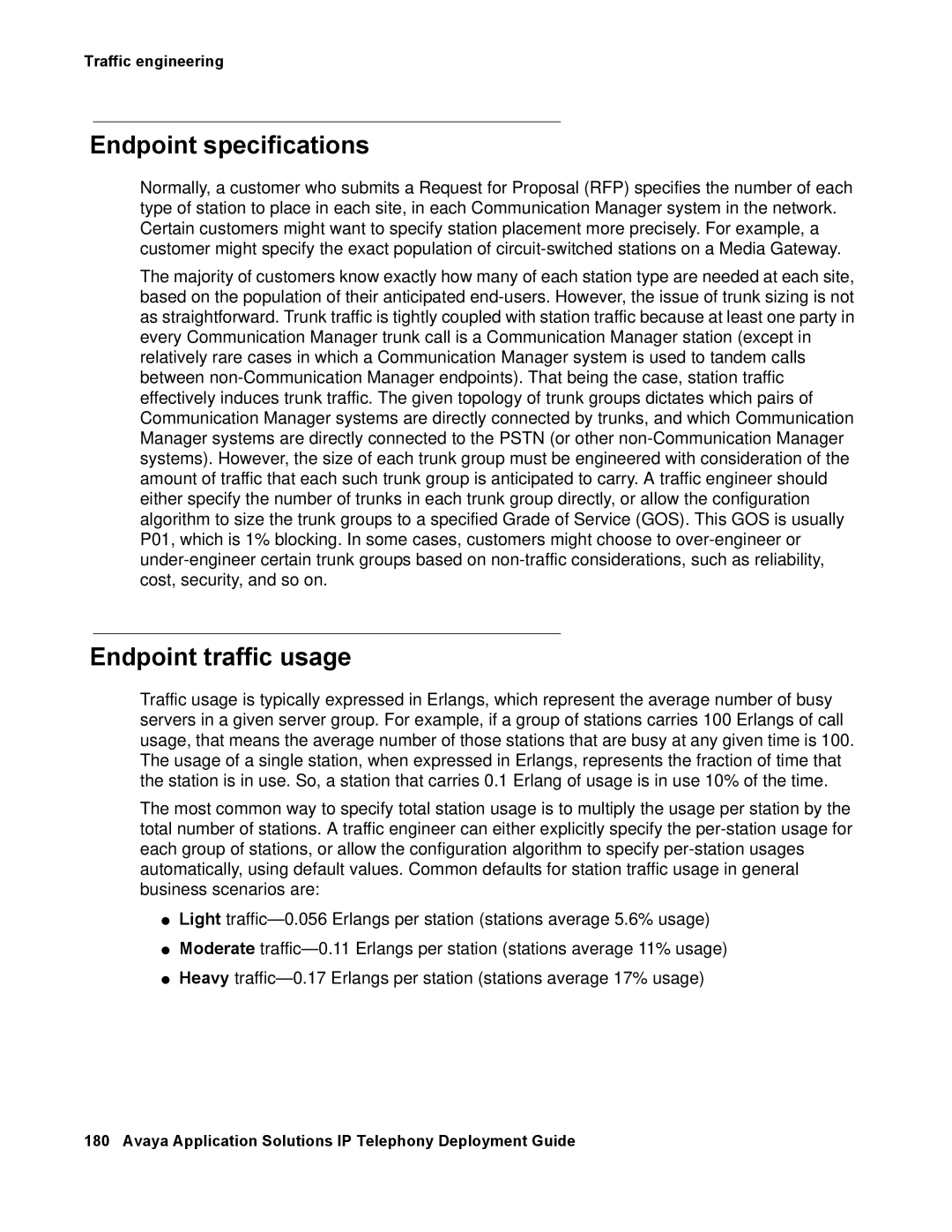
Traffic engineering
Endpoint specifications
Normally, a customer who submits a Request for Proposal (RFP) specifies the number of each type of station to place in each site, in each Communication Manager system in the network. Certain customers might want to specify station placement more precisely. For example, a customer might specify the exact population of
The majority of customers know exactly how many of each station type are needed at each site, based on the population of their anticipated
Endpoint traffic usage
Traffic usage is typically expressed in Erlangs, which represent the average number of busy servers in a given server group. For example, if a group of stations carries 100 Erlangs of call usage, that means the average number of those stations that are busy at any given time is 100. The usage of a single station, when expressed in Erlangs, represents the fraction of time that the station is in use. So, a station that carries 0.1 Erlang of usage is in use 10% of the time.
The most common way to specify total station usage is to multiply the usage per station by the total number of stations. A traffic engineer can either explicitly specify the
●Light
●Moderate
●Heavy
